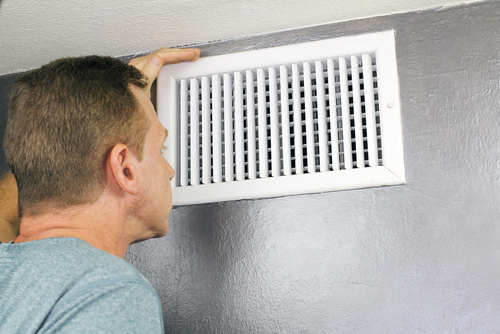
How to Test Air Quality in Your Home for Better Health
Indoor air quality plays a critical role in maintaining your health and well-being. Poor air quality can cause or exacerbate respiratory conditions, allergies, and even long-term health issues. Whether you’re experiencing unexplained symptoms or simply want peace of mind, performing an air quality test for home environments is a proactive step toward a healthier living space.
Why Air Quality Matters in Your Home
The air inside your home can contain pollutants that may go unnoticed, such as mold spores, dust mites, volatile organic compounds (VOCs), radon, and other contaminants. Factors such as poor ventilation, high humidity, and water damage can exacerbate these problems. Prolonged exposure to poor air quality can lead to:
- Allergies and asthma flare-ups
- Fatigue and headaches
- Respiratory illnesses
- Long-term effects on heart and lung health
Testing your home’s air quality not only helps identify these hazards but also guides the appropriate steps to mitigate them, ensuring a healthier environment for your family.
Signs of Poor Indoor Air Quality
Before testing, it’s helpful to recognize signs that your home might have air quality issues:
- Persistent Allergies: Sneezing, coughing, or itchy eyes that worsen indoors.
- Mold Growth: Visible mold or a musty smell is a strong indicator of mold spores in the air.
- High Humidity Levels: Excessive moisture creates a breeding ground for mold and dust mites.
- Unexplained Health Symptoms: Fatigue, dizziness, or respiratory issues that improve when you leave the house.
- Peeling Paint or Wallpaper: These can indicate water damage, which often leads to mold growth.
If any of these symptoms sound familiar, conducting an air quality test for home conditions is essential.
How to Test Air Quality in Your Home
There are several ways to test air quality, ranging from simple DIY methods to professional services.
Use DIY Air Quality Testing Kits
Home testing kits are available for various pollutants, such as mold, radon, VOCs, and allergens. These kits typically involve taking a sample from your home and sending it to a lab for analysis.
- Advantages: Cost-effective and easy to use.
- Limitations: DIY kits may not provide the comprehensive analysis needed for complex air quality issues.
Invest in an Indoor Air Quality Monitor
Indoor air quality monitors are devices that provide real-time readings of air pollutants such as particulate matter, carbon dioxide, and humidity.
- Advantages: Instant feedback and continuous monitoring.
- Limitations: May not detect specific contaminants such as mold or radon.
Schedule Professional Air Quality Testing
Professional testing is the gold standard for the most accurate and comprehensive results. Experts use specialized equipment to identify pollutants, assess ventilation, and recommend solutions tailored to your home.
- Advantages: Thorough analysis, expert recommendations, and actionable solutions.
- Limitations: Higher upfront cost, but worth it for complex or serious issues.
Key Contaminants to Test For
Mold and Mildew
Mold thrives in damp areas like basements, bathrooms, and kitchens. Testing for mold is critical if you’ve experienced water damage or notice a musty odor.
Radon
This radioactive gas is undetectable without testing and is the second leading cause of lung cancer in the U.S. Radon testing is a must, especially in areas prone to high radon levels.
VOCs
Volatile organic compounds are chemicals released by household products such as paints, cleaning agents, and furniture. Prolonged exposure to VOCs can irritate the respiratory system and cause long-term health issues.
Particulate Matter (PM2.5 and PM10)
These tiny particles, often caused by cooking, smoking, or outdoor pollution, can penetrate deep into the lungs and pose serious health risks.
Carbon Monoxide
Odorless and invisible, carbon monoxide is a dangerous gas that requires immediate attention if detected.
Steps to Improve Indoor Air Quality
Testing is the first step, but addressing the root causes of poor air quality is equally important.
Control Humidity Levels
Keep indoor humidity levels between 30% and 50% to prevent mold and dust mite growth. If necessary, use a dehumidifier.
Improve Ventilation
Ensure your home has adequate airflow by using exhaust fans, opening windows, and maintaining HVAC systems.
Eliminate Pollutant Sources
Switch to low-VOC products, fix water leaks promptly, and avoid smoking indoors.
Regular Cleaning
Vacuum with a HEPA filter, dust surfaces frequently, and wash bedding and curtains to reduce allergens.
Consider Air Purifiers
High-quality air purifiers can remove pollutants like mold spores, pet dander, and particulate matter.
Why Choose Professional Testing from Ahold of Mold Environmental?
While DIY kits and monitors provide a basic understanding, professional testing ensures a detailed diagnosis of your home’s air quality. At Ahold of Mold Environmental, we bring over two decades of expertise to every job. Our services go beyond testing—we provide tailored solutions to address mold, water damage, and other air quality concerns.
Our team includes environmental consultants, hygienists, engineers, and indoor air quality experts, all dedicated to helping you create a safe and healthy living space. From diagnosing complex issues to implementing effective remediation strategies, we are your trusted partner for improving indoor air quality.
When to Test Air Quality
Testing isn’t a one-time event. Consider scheduling an air quality test in the following scenarios:
- After water damage or flooding.
- If family members develop unexplained respiratory symptoms.
- When purchasing or moving into a new home.
- During renovations or after installing new flooring or furniture.
- If your home is in an area prone to radon or other pollutants.
Take Control of Your Home’s Air Quality Today
Maintaining good indoor air quality is crucial for your family’s health and well-being. Whether you suspect mold, VOCs, or other contaminants, an air quality test for home environments is your first line of defense.
At Ahold of Mold Environmental, we’ve been providing expert mold remediation and air quality testing in Buffalo, NY, and Erie, PA, since 1994. As a family-owned and operated company, we combine decades of experience with genuine care for our clients.
Don’t leave your family’s health to chance. Contact us today to schedule your air quality assessment and take the first step toward a cleaner, healthier home!
Categorised in: Air Quality


